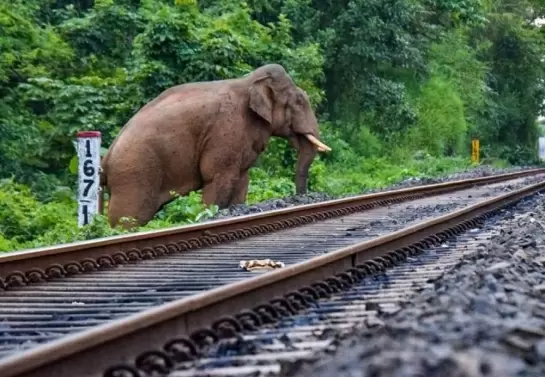India home to 60% of Asian elephants, says census report
12-August-2017
With 60 per cent of the Asian elephant population, India is home to a total of 27,312 free-ranging megaherbivores, an official said here on Saturday on the occasion of the release of a census report to mark the World Elephant Day.
According to the report released by Union Environment Minister Harsh Vardhan here, elephants -- India's heritage animal -- are present in over 22 states and a union territory (Andaman and Nicobar Islands).
"Elephants should not be confined to only few regions of few states...they must spread... We will work to fix the forest corridors and mend their habitats," Harsh Vardhan said.
Of all the states, Karnataka has the maximum 6,049 free-ranging or wild elephant population. Following Karnataka closely is Assam at 5,719, Kerala 3,054, Tamil Nadu 2,761, Odisha 1,976, Uttarakhand 1,839 and Arunachal Pradesh with 1,614 wild elephants, among others.
Andaman and Nicobar, where a few animals were rehabilitated, now has 19 free ranging elephants spread over 133 sq km. At six, Maharashtra has the smallest number of wild elephants population, which moved there due to their migratory nature.
The report asserted that traces were also found in Manipur and Mizoram that might have nine and seven wild elephants, respectively.
There are 29 elephant reserves in India spread over 65,000 sq km.
"Sixty per cent of Asian elephants are in our country," said Siddhanta Das, Director General - Forest and Special Secretary, Union Environment Ministry.
The government, however, said that the 2017 census results were based only on the direct count method, as the previous census had placed the number at around 30,000.
Out of a total 23 states and UTs, in Tripura, Nagaland and Andaman regions the census was done based on the dung-count method as the direct counting method did not work there.
"At this stage, comparisons should not be made between results from the 2017 census and the earlier 2012 census, the reason being that the earlier census results were based on a mixture of direct and indirect counting methods, as reported by different states," the census report pointed out.
Other population estimation methods like camera trapping, DNA-based profiles, occupancy models and others required substantial research and development and could not be implemented within a short period across the entire country, the report stated.
The report also talked of drought due to which the animals had to move.
"In 2017, there were major shifts in dry season habitat use by elephants in the south because of a severe drought in the previous year," the report pointed out.
According to experts, there were an estimated 100,000 elephants in India at the beginning of the 20th century. - IANS
Bondi Beach Terror Attack: Shooters Sajid-Naveed Identified As Pakistani-Origin Father-Son Duo
Legendary Singer S.P. Balasubrahmanyam's Statue Unveiled In Hyderabad Amid Row
In BJP, Anyone Can Rise From Pasting Posters To National President: Giriraj Singh On Nitin Nabin’s Elevation
Ram Janmabhoomi Movement Veteran Ram Vilas Vedanti No More, Yogi Adityanath Pays Tribute
Rajinikanth Turns 75: Anil Kapoor, Kajol Lead Heartfelt Birthday Tributes









